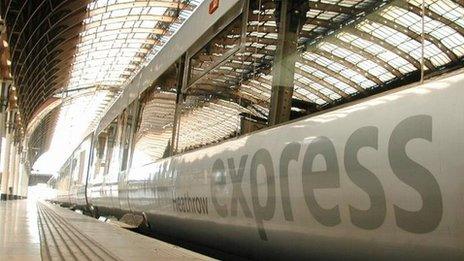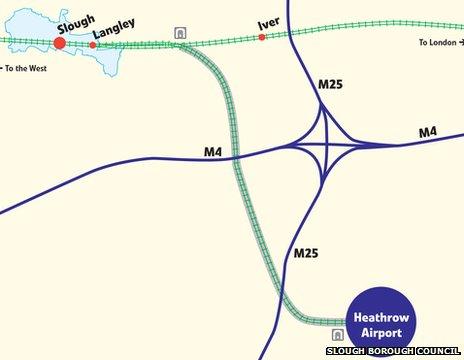Heathrow rail link plan unveiled by Network Rail
- Published

Rail passengers travelling to the airport from the west currently use Heathrow Express services from London Paddington or the underground
Plans for a direct rail link between the Great Western main line and Heathrow Airport have been unveiled.
A 5km (3m) tunnel under the M4 and M25 would link Terminal 5 with Langley and Iver, connecting passengers via Slough to Reading and the west.
Business groups in the Thames Valley claim the route could create up to 40,000 new jobs and up to £2bn in economic benefits.
If granted planning permission, Network Rail could begin construction in 2016.
The £500m rail link was included in the government's plans for airport expansion announced in 2012.
Currently, passengers travelling from the west to Heathrow Airport have to travel in to London and connect with trains from Paddington or use underground services on the Piccadilly Line. However, direct bus services are also available from Reading railway station to Heathrow.

The line would link Terminal 5 with the main line east of Langley and Slough
Journey times from the airport to Slough would be six minutes and 28 minutes to Reading.
"The rail link will dramatically improve rail journeys, reduce congestion on existing services and provide a boost to the local economy," said Patrick Hallgate, from Network Rail.
"It's important we take the opportunity to discuss these plans so we can ensure the investment made in a bigger, better railway delivers maximum benefit."
Ruth Bagley, chief executive of Slough Borough Council, said: "Now the route has been confirmed as connecting the mainline east of Slough, businesses will be able to access their international markets faster and more reliably than ever."
If approved, tunnelling work could begin in early 2018 with completion set for 2021.
- Published12 July 2012
- Published12 July 2012